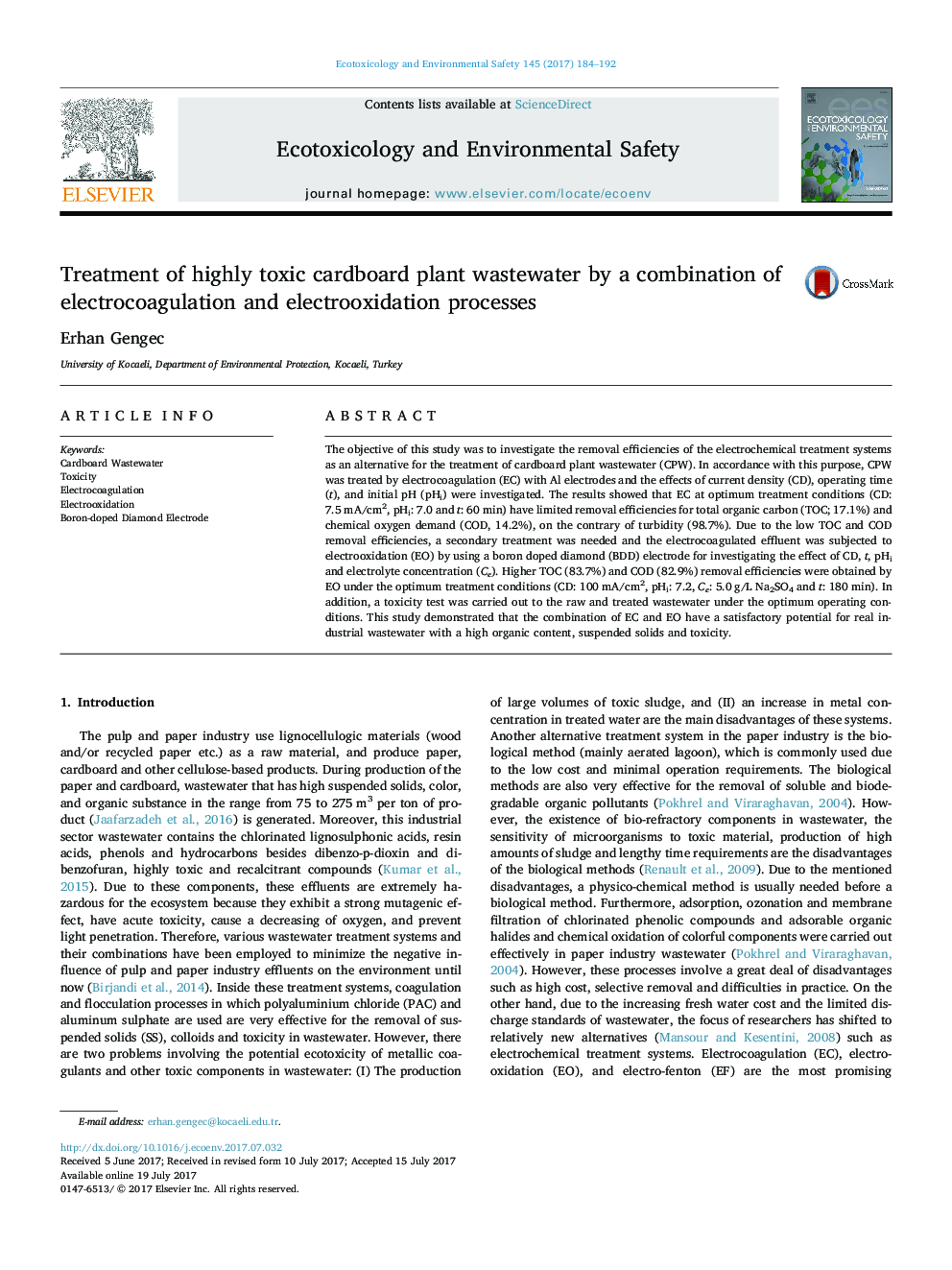| Article ID | Journal | Published Year | Pages | File Type |
|---|---|---|---|---|
| 5747771 | Ecotoxicology and Environmental Safety | 2017 | 9 Pages |
â¢Cardboard wastewater was treated by electrocoagulation-electrooxidation.â¢High turbidity (98.7%) and toxicity removal were achieved by electrocoagulation.â¢A large amount of the organic content (> 82%) was removed by electrooxidation.â¢The effects of the parameters were investigated.
The objective of this study was to investigate the removal efficiencies of the electrochemical treatment systems as an alternative for the treatment of cardboard plant wastewater (CPW). In accordance with this purpose, CPW was treated by electrocoagulation (EC) with Al electrodes and the effects of current density (CD), operating time (t), and initial pH (pHi) were investigated. The results showed that EC at optimum treatment conditions (CD: 7.5Â mA/cm2, pHi: 7.0 and t: 60Â min) have limited removal efficiencies for total organic carbon (TOC; 17.1%) and chemical oxygen demand (COD, 14.2%), on the contrary of turbidity (98.7%). Due to the low TOC and COD removal efficiencies, a secondary treatment was needed and the electrocoagulated effluent was subjected to electrooxidation (EO) by using a boron doped diamond (BDD) electrode for investigating the effect of CD, t, pHi and electrolyte concentration (Ce). Higher TOC (83.7%) and COD (82.9%) removal efficiencies were obtained by EO under the optimum treatment conditions (CD: 100Â mA/cm2, pHi: 7.2, Ce: 5.0Â g/L Na2SO4 and t: 180Â min). In addition, a toxicity test was carried out to the raw and treated wastewater under the optimum operating conditions. This study demonstrated that the combination of EC and EO have a satisfactory potential for real industrial wastewater with a high organic content, suspended solids and toxicity.
Graphical abstractDownload high-res image (255KB)Download full-size image
